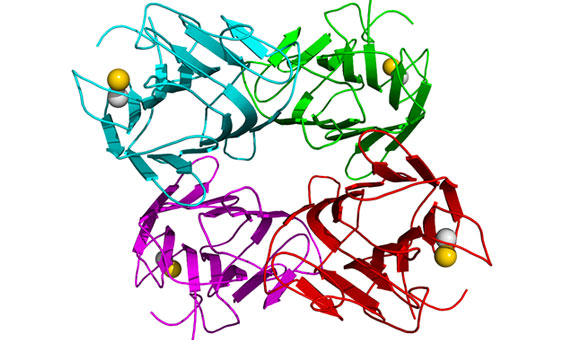After lactose, simple sugars and gluten, it is now the turn of lectins to come under suspicion. The recent publication of the book The plant paradox by Steven Gundry, already a bestseller, has promoted a new trend among nutritional gurus, that of demonizing the ingestion of these compounds found mainly in legumes and cereals—foods that until recently were well considered and are present in many healthy diets. Lectins are now being singled out as being responsible for multiple ailments, health problems, and even obesity, given their presumed toxicity. Are lectins the new food poison to be eradicated?

Lectins are a type of protein naturally present in most vegetables and some animal products. Thus, they are found to a greater or lesser extent in legumes, cereals, fruits and nuts, and vegetables, but also in eggs, milk and other dairy products. The main feature of these compounds is the affinity they show for binding to carbohydrates such as those present in cell membranes. For this reason, it is considered that they operate to maintain the cohesive cells of the tissues, inside the plants. And it is believed that, by virtue of their toxicity, they act as a defence mechanism (against bacteria or insects) and a deterrent to potential predators.
The toxicity of lectins stems from the inability of the digestive system to metabolize them, thus they pass through it intact and can attach to the cells of the intestinal wall, disabling and damaging them. An extreme case is that of ricin, the first lectin discovered, isolated from poisonous castor beans in 1888, although the toxicity of the lectins in our food is much lower. It is not known if they play any role inside the human body, but it is assumed that they can lead to an immune system response and consequently inflammation or even an allergic reaction. “In the human body they may cause cell damage and gastrointestinal upset, in vitro they cause red cell lysis,” explains David Jenkins, a professor in the department of nutritional sciences at the University of Toronto, in a statement to OpenMind.
More suspicions than certainties
It should be noted, as the International Food Information Council Foundation (IFIC) states on its website, that “the majority of these studies have been conducted in vitro, on animals, and with isolated lectins, that have been removed from a food and purified.” This means there are more suspicions than certainties about the toxic effects of dietary lectins.
In addition, and as is often the case with food, nothing is black or white. “As with dietary fibre, some lectins may be useful in reducing the rate of absorption and lowering the glycaemic index of the diet,” says Dr. Jenkins.
The solution proposed by Steven Gundry in The plant paradox is to dispense with the foods that contain them. However, lectins are ubiquitous in the plant kingdom and giving them up would lead to the rejection of an enormous amount of food, mainly cereals and legumes, and thus also to the loss of all the nutrients, vitamins and compounds that they provide, which are beneficial —if not essential— for our bodies. Gundry promotes the idea of replacing these lost nutrients with

supplements and capsules and sells pills that supposedly counteract the effects of lectins, which require an expenditure of 80 dollars a month.
In contrast, David Jenkins cautions that “lectins are toxins, but many of them are in foods that are good for us, and these foods properly cooked should not avoided.”
Cook them properly
Cook them properly. This is the key so their consumption does not pose any risk. Subjected to a sufficiently high temperature for a minimum period of time, most of these lectins are degraded or destroyed. According to the IFIC, “in the case of beans, especially rich in lectins of acute toxicity if eaten raw, cooking them in boiling water for thirty minutes ensures that their intake is safe.” Other culinary methods or techniques such as fermentation also eliminate the lectins by bacterial action, as does preliminary soaking and germination. These measures reduce the concentration of lectins to minimum levels, perfectly tolerable by human beings.
As Dr. Jenkins explains: “when food is eaten with pre-cooked lectins, most of it has already been degraded. The little that remains is attached to free carbohydrates present in the medium (from the same source as the lectins or other foods consumed along with them) and pass through the digestive tract.” The only danger arises “when significant quantities of raw foods rich in them are ingested and there are not enough free carbohydrates to attach to, which then causes them to attach to the cells of the intestinal wall and sometimes produce symptoms of intoxication.”

Given the above, in the face of concern about the toxic effects of lectins, the most appropriate diet would be close to this:
- Restrict risky eating habits such as ingesting raw (or minimally processed) foods, with a high concentration of lectins. And, in the same way, apply caution with diets that foment such practices, like raw vegetarian. “Diets that involve raw food consumption can be healthy as long as those with a minimal lectin content are chosen,” Jenkins says.
- Maintain a rich and balanced diet, avoiding unbalanced regimens such as those that prohibit the intake of carbohydrates at all or certain meals or the combination of certain food groups.
- Avoid thinking in terms of good foods and bad foods. Returning to the idea discussed above, nothing is black or white. An example is that of whole grains, which most everybody knows are much better than the refined ones because the refining process eliminates the bran and germ, the main sources of fibre and other nutrients. But also, and paradoxically, this where the lectins are concentrated, which are barely present in the processed grains.
Comments on this publication